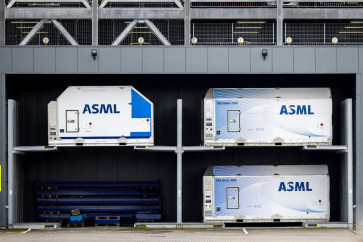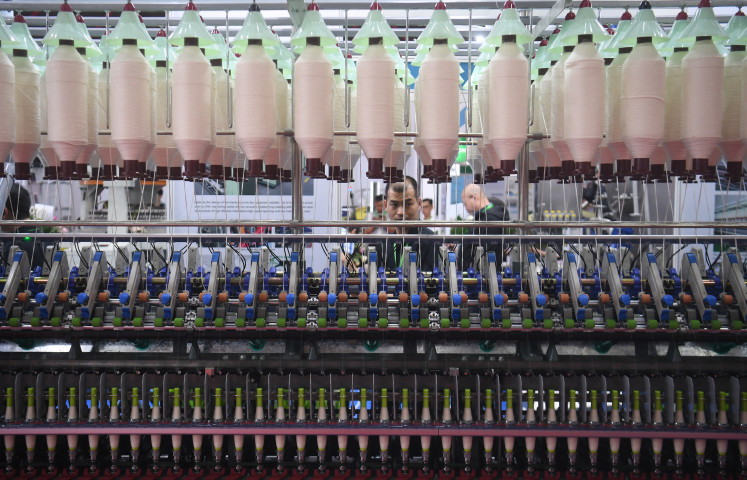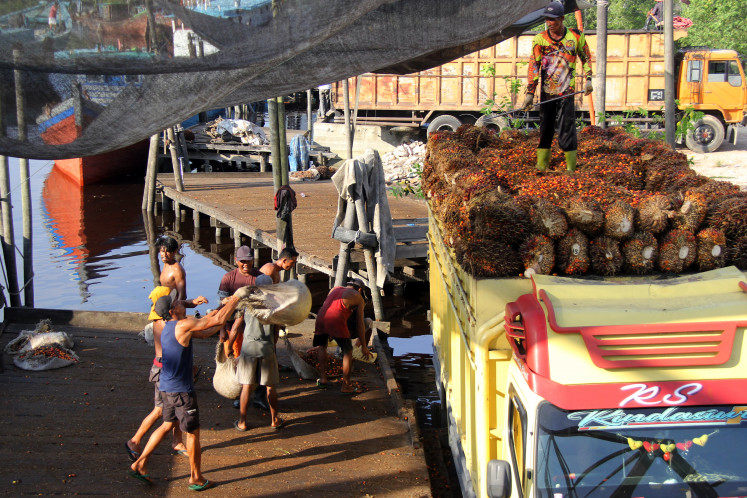Popular Reads
Top Results
Can't find what you're looking for?
View all search resultsPopular Reads
Top Results
Can't find what you're looking for?
View all search resultsBRI raises Rp 1.8t from MTN issuance
The rising need for ample liquidity to support loan expansion has prompted state-owned lender Bank Rakyat Indonesia (BRI) to issue a medium-term note (MTN) amid prolonged weak economic growth
Change text size
Gift Premium Articles
to Anyone
T
he rising need for ample liquidity to support loan expansion has prompted state-owned lender Bank Rakyat Indonesia (BRI) to issue a medium-term note (MTN) amid prolonged weak economic growth.
The country’s weak loan growth at single-digit percentages has not thwarted the bank’s expansion as it sees high demand for credit, particularly in the micro segment, which grew 22 percent year-on-year (yoy) as of August.
The high growth in micro loans has helped BRI’s overall loans grow to above the market average at 15 to 17 percent yoy as targeted from the beginning of the year, prompting the bank to seek extra liquidity from alternative funding sources outside the regular third-party funds.
BRI finance director Haru Koesmahargyo said the bank, which is the country’s largest micro lender, had raised Rp 1.8 trillion (US$136.8 million) from an MTN issuance on Sept. 15 with a 370-day tenor and annual fixed rate of 7.4 percent.
The debt paper was listed on the Indonesian Central Securities Depository (KSEI) on the same day, with the first interest payment due on Dec. 16 and a Sept. 21, 2017, maturity date.
The recent issuance is the first of a larger plan to issue a total of Rp 5 trillion worth of MTN this year. However, with less than four months remaining before year-end, Haru said it would review the plan.
“A one-time issuance of such a scale may not be fully absorbed [in the market], so we may issue it gradually,” he said.
The MTN will help BRI manage stable long-term funding as it anticipates a mismatch between funding and lending maturity, a similar issue faced by other lenders in the country as most time deposits are short-term funds that will not be fully compatible with finance long-term loans.
Haru said finding alternative funding sources would be more affordable than boosting growth in time deposits, which would cost more in interest payments amid tight competition with other banks.
BRI’s high growth in micro loans has been partly triggered by rising demand in the government-backed micro credit program (KUR), which offers a subsidized lending rate of 9 percent, far lower than the average micro loan rate of 18 to 20 percent.
In addition to the MTN, BRI also plans to issue Rp 20 trillion worth of continuous bond offering (PUB) over two years, with half of the figure to be issued in 2016.
Its subsidiary BRI Syariah is preparing the issuance of subordinated sukuk worth Rp 1 trillion as well, with a seven-year tenor to strengthen its capital.
Despite such high loan growth, Haru was convinced that the bank’s non-performing loan (NPL) could be maintained at 2.4 to 2.5 percent through to the end of the year.
---------------
To receive comprehensive and earlier access to The Jakarta Post print edition, please subscribe to our epaper through iOS' iTunes, Android's Google Play, Blackberry World or Microsoft's Windows Store. Subscription includes free daily editions of The Nation, The Star Malaysia, the Philippine Daily Inquirer and Asia News.
For print subscription, please contact our call center at (+6221) 5360014 or subscription@thejakartapost.com










